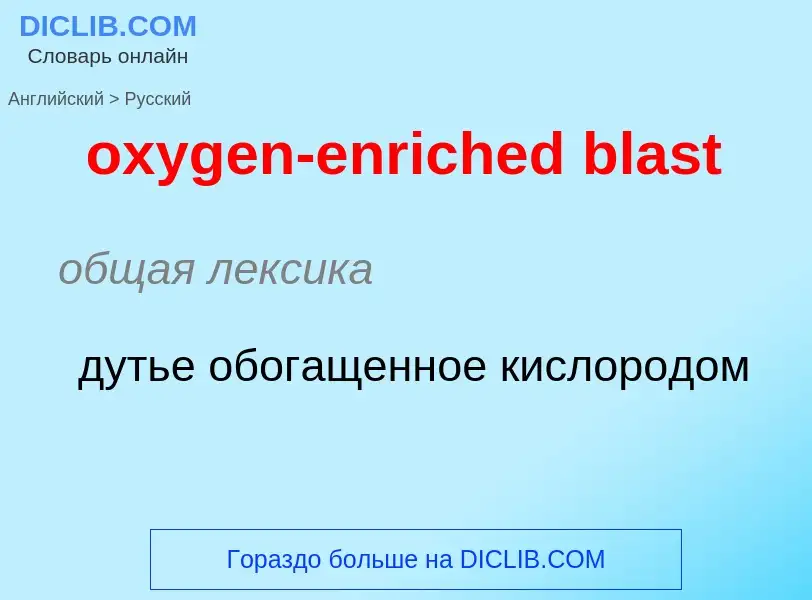Tradução e análise de palavras por inteligência artificial ChatGPT
Nesta página você pode obter uma análise detalhada de uma palavra ou frase, produzida usando a melhor tecnologia de inteligência artificial até o momento:
- como a palavra é usada
- frequência de uso
- é usado com mais frequência na fala oral ou escrita
- opções de tradução de palavras
- exemplos de uso (várias frases com tradução)
- etimologia
oxygen-enriched blast - tradução para russo
общая лексика
дутье обогащенное кислородом
медицина
оксигенотерапия
медицина
абсорбционный ателектаз лёгких
Definição
Wikipédia

Oxygen therapy, also known as supplemental oxygen, is the use of oxygen as medical treatment. Acute indications for therapy include hypoxemia (low blood oxygen levels), carbon monoxide toxicity and cluster headache. It may also be prophylactically given to maintain blood oxygen levels during the induction of anesthesia. Oxygen therapy is often useful in chronic hypoxemia caused by conditions such as severe COPD or cystic fibrosis. Oxygen can be delivered via nasal cannula or face mask, or via high pressure conditions such as in endotracheal intubation or hyperbaric chamber. It can also be given through bypassing the airway, such as in ECMO therapy.
Oxygen is required for normal cellular metabolism. However, excessively high concentrations can result in oxygen toxicity, leading to lung damage and respiratory failure. Higher oxygen concentrations can also increase the risk of airway fires, particularly while smoking. Oxygen therapy can also dry out the nasal mucosa without humidification. In most conditions, an oxygen saturation of 94–96% is adequate, while in those at risk of carbon dioxide retention, saturations of 88–92% are preferred. In cases of carbon monoxide toxicity or cardiac arrest, saturations should be as high as possible. While air is typically 21% oxygen by volume, oxygen therapy can increase O2 content of air up to 100%.
The medical use of oxygen first became common around 1917, and is the most common hospital treatment in the developed world. It is currently on the World Health Organization's List of Essential Medicines. Home oxygen can be provided either by oxygen tanks or oxygen concentrator.



![A home oxygen concentrator for a person with [[emphysema]] A home oxygen concentrator for a person with [[emphysema]]](https://commons.wikimedia.org/wiki/Special:FilePath/Home oxygen concentrator.jpg?width=200)
![Oxygen piping and regulator with flow meter, for oxygen therapy, mounted in an [[ambulance]] Oxygen piping and regulator with flow meter, for oxygen therapy, mounted in an [[ambulance]]](https://commons.wikimedia.org/wiki/Special:FilePath/Oxygen piping.png?width=200)
